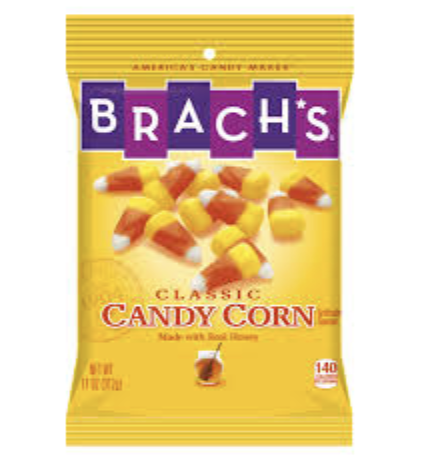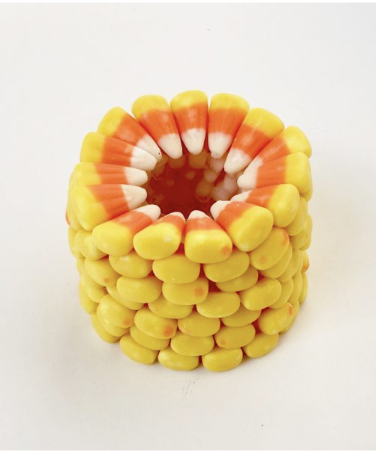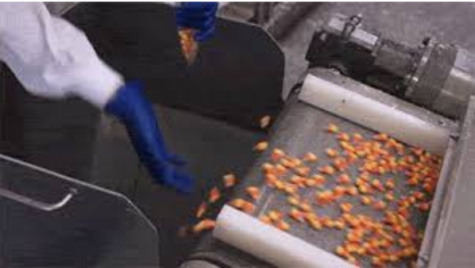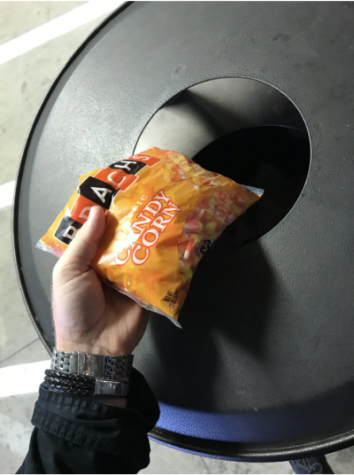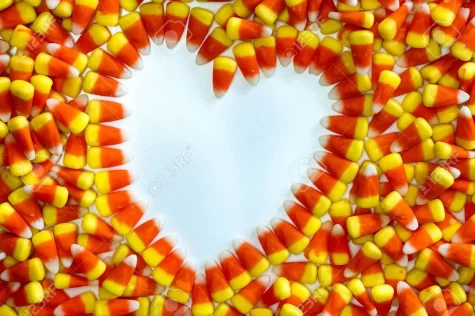A Controversial Confection
Candy corn: loved by some, loathed by others. Whatever the case, when the leaves begin to wither and the air turns cool, the grocery store shelves are inevitably stocked with bags of Brach’s. Since candy corn is under such heated dispute, why is it still so popular? Where did it come from, and how is it made?
Origins
Originally called “chicken feed,” candy corn was first invented in the late 1880s by a man named George Renninger, who worked for Wunderle Candy Company (now called Jelly Belly). Though Jelly Belly still makes candy corn, the largest manufacturer of it is currently Brach’s, who possess 85% of the candy corn industry during the Halloween season. Despite being considered a fall treat, candy corn was advertised as bulk confectionery for the first half of the 20th century, a popular treat to be eaten year round. Its colors – yellow, orange, and white – are supposed to represent the fall harvest, or corn on the cob. When stacked with the yellow side facing outwards, they look like an ear of corn.
How It’s Made
The way candy corn is created has changed dramatically since the 1800s. Originally, the intricate process to form candy corn involved combining sugar, water, and corn syrup in large kettles. Then, they added fondant and marshmallow for a creamy texture before pouring the mixture into kernel-shaped molds. Confectioners had to complete this process three times, once for each color. Today, however, most of this work is done by machine. After a tray of kernel shaped holes is filled with cornstarch, each hole is filled with syrup with the three signature colors of candy corn. Once the mixture cools and hardens, a machine empties the kernels into chutes, and any excess cornstarch is shaken loose. The candy corn is then coated in confectioner’s glaze and packaged to be put into stores across the country.
The Controversy
In order to dig deeper into what makes candy corn so disputed, I asked a few students at Harriton High School about their thoughts on the confection. The first student I asked, who was clearly not fond of the Halloween treat, said, “Although it looks pretty, it doesn’t have any good flavor. It is just pure sugar.” Another student claimed, “Candy corn is the most vile candy ever. It’s actually disgusting.” Someone else nearby had an entirely different opinion: “Candy corn is absolutely delicious. The taste is absolutely immaculate, like, I would eat candy corn for the rest of my life and never anything else. Absolute ten out of ten. One hundred out of ten.”
Regardless of whether you love or hate candy corn, I hope we can all develop an appreciation for its history and role in American tradition. After learning more about its background and how it is made, has your opinion changed? Are you a lover, or a loather?

Zoe is a Harriton sophomore who is excited to write for Features and Arts and Entertainment during her second year in the Banner. She is also a member...



